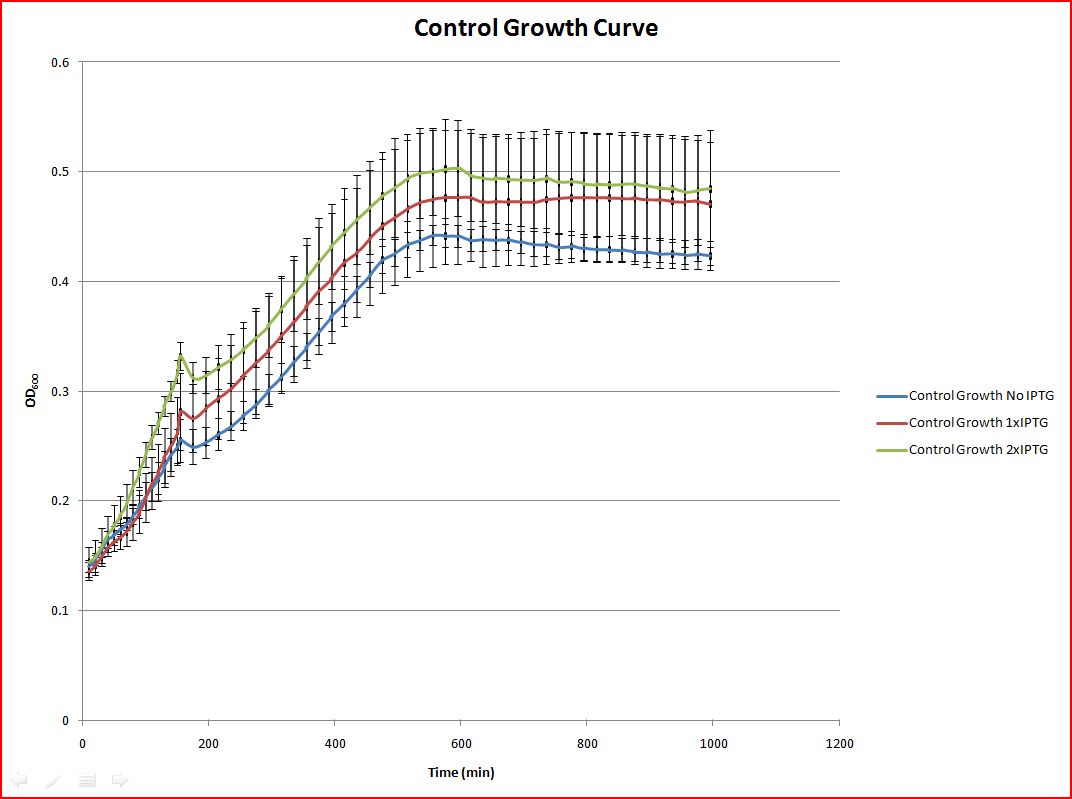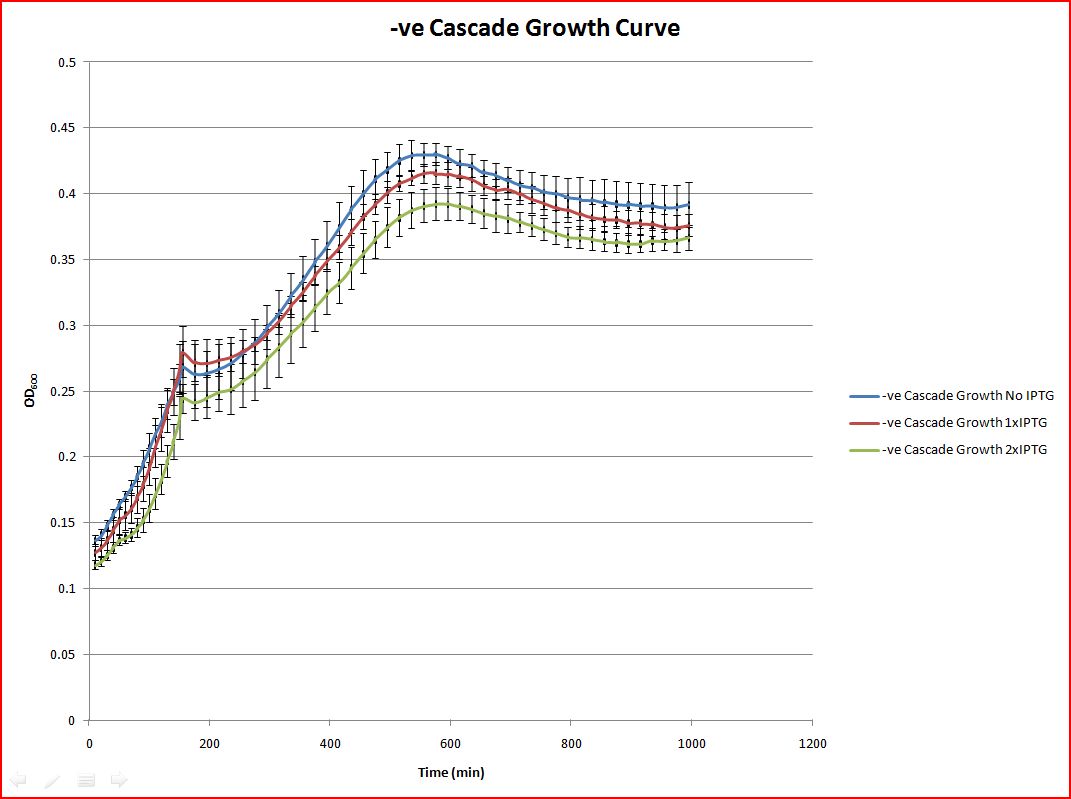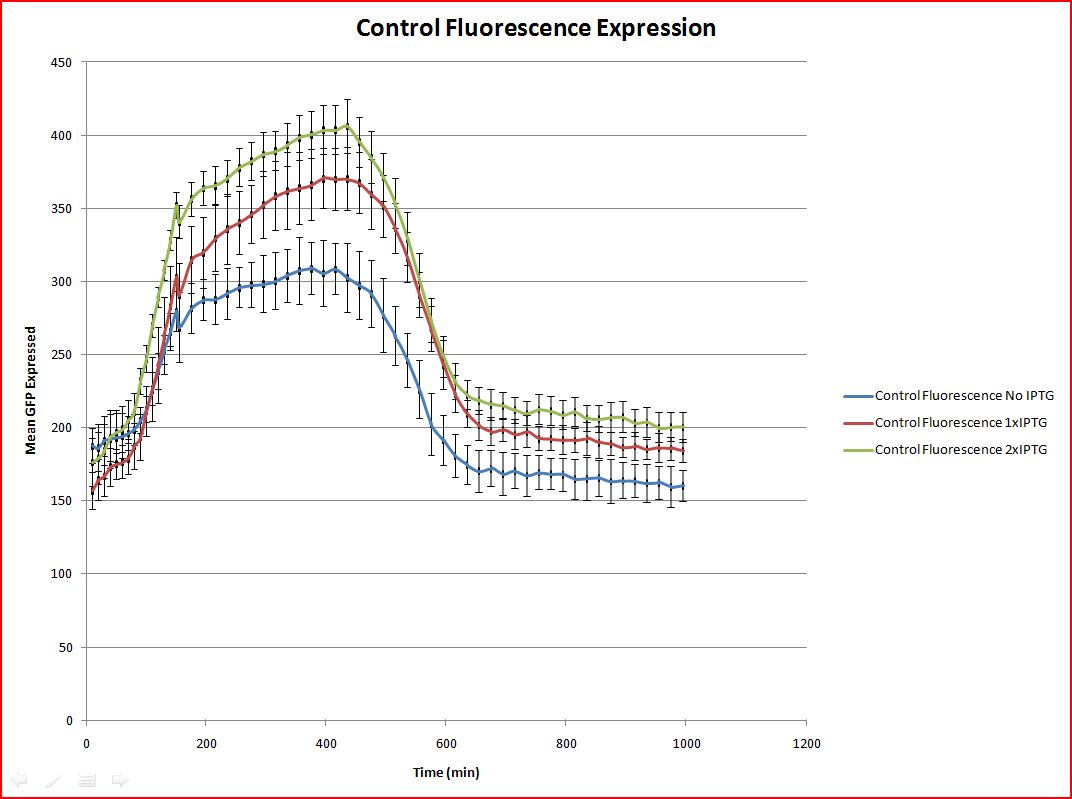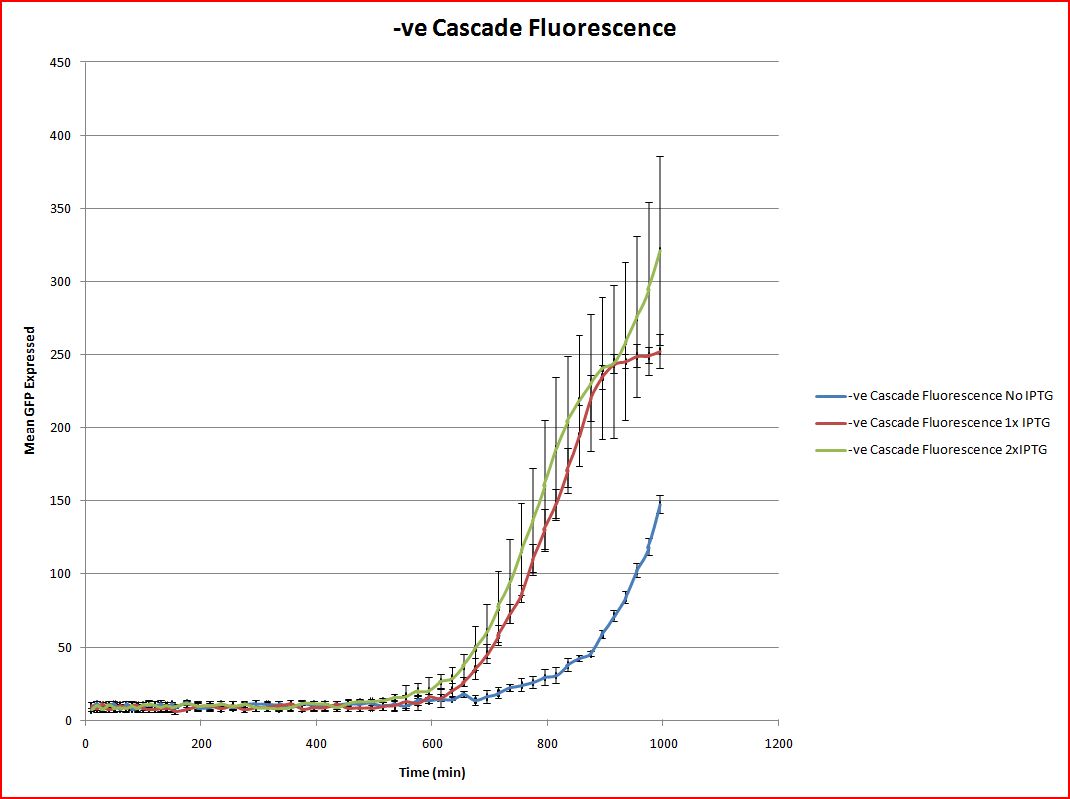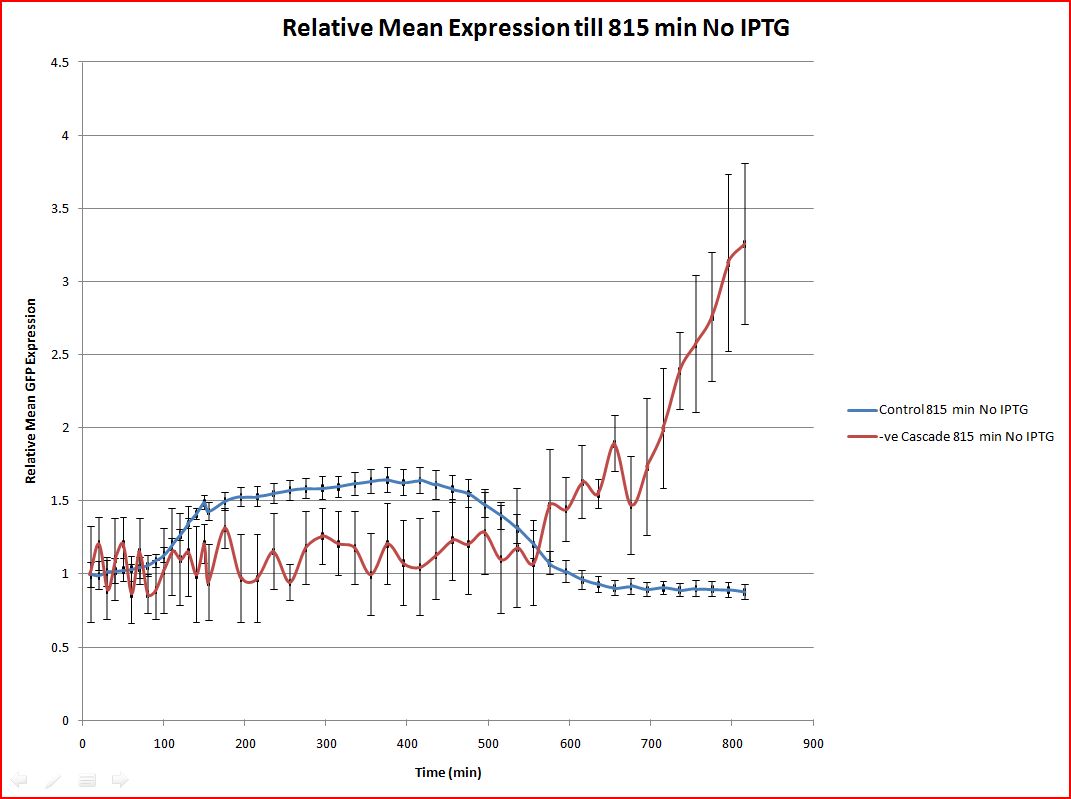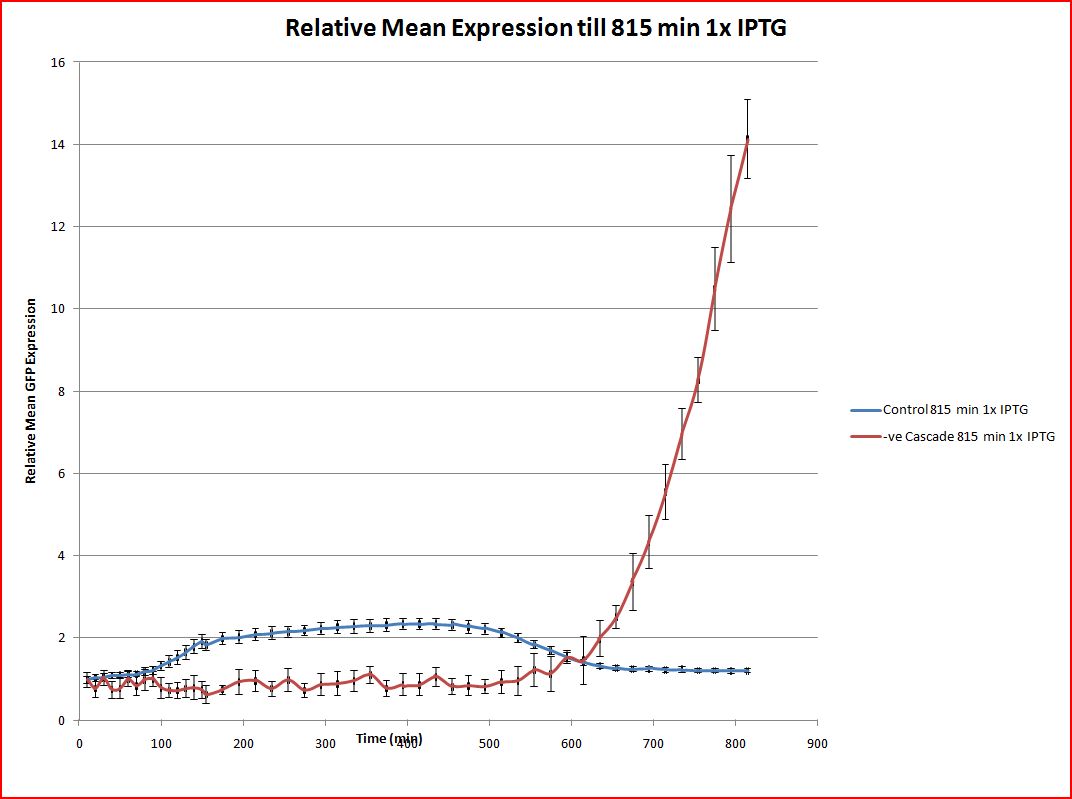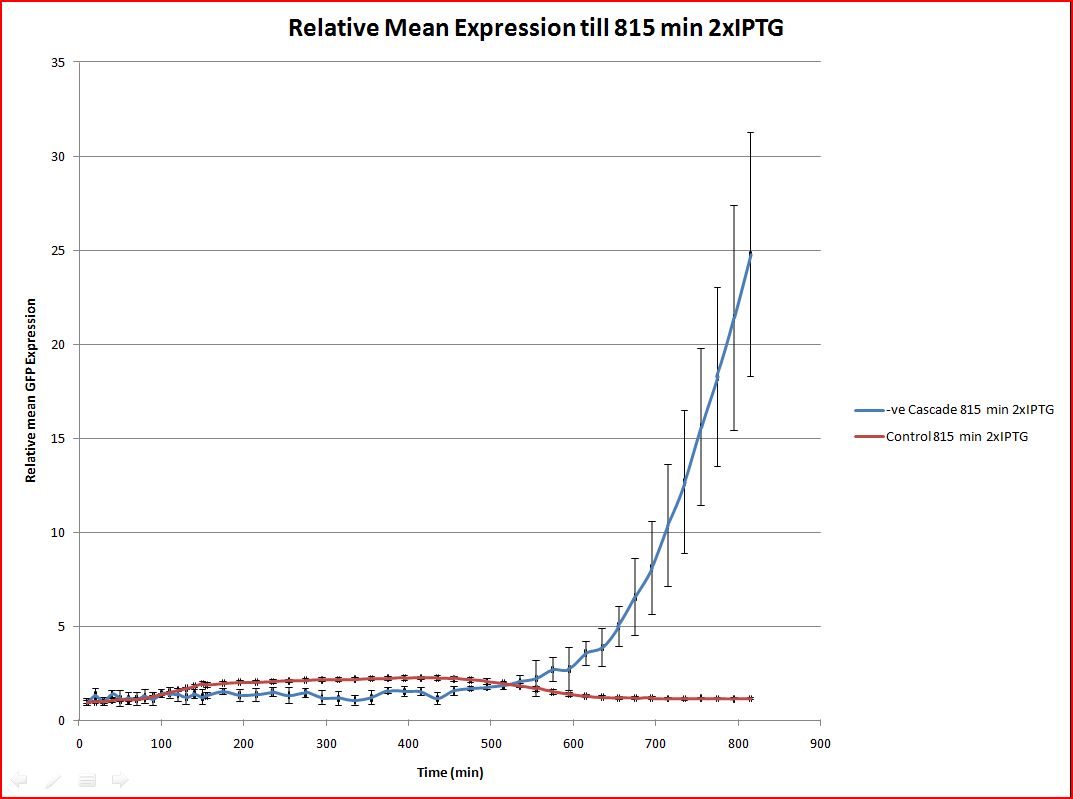Team:TUDelft/Delay Results Continue
Fluorescence Experiments
The control organism developed for this experiment has two plasmids. One is plasmid 1 of negative cascade and other is a pLacI controlled GFP generator. Hence it resembles the negative cascade organism in all ways other than the cascade initiating gene (TetR). Even though our modelling showed that the delay time caused by the cascade is around 6 Hr 15 mins without leakage, at first we guessed that our delay device would cause only delay in less than 2 hours since we saw leaky GFP expression already in control colonies. Hence the fluorescent reading after IPTG induction (0.1mM and 0.2mM)(see for protocol here) in the 96 well plates were taken only for 2 and half hours and the readings were not giving promising results. Hence with the help our supervisors to find which part of the growth curve are we in, we ran an overnight experiment with continuing the same experiment for 14 hours more, hence in total we would get a result for 16 and half hours.
The results for the positive control and negative cascade (experiment) are given in this xls attached here. The results were consolidated and shown in graphs below.
Both the figures 1 and 2 show the growth curves of control and negative cascade. They also show that the readings were taken till the stationary phase of growth (995 mins). Also both negative cascade and control have shown same growth pattern. This is very good for our fluorescence measurements interpretation.
In figure 3 the fluorescence (GFP) measurements of control is shown. We can see very clearly that IPTG induction has an effect on the increasing change in fluorescence. Also the fluorescence decreases after a period which show that GFP gets degraded since it has LVA tag and also IPTG has been fully consumed. Also in figure 4 the negative cascade starts to produce fluorescence very lately around 600 minutes. This shows that Delay device works fine.
Also from the above graphs we found that the GFP is produced in non induced E.coli (K12) cells (both control and negative cascade containing cells) which is supposed to have LacI repressor. We think the reason could be the LacI repressor produced by the cells were not enough to repress the higher number of pLacI in the plasmids. hence to characterize the negative cascade plasmids we used relative mean (mean/mean at time of induction) and constructed the comparison graphs of control and negative cascade samples under the three conditions (No IPTG, 1xIPTG and 2xIPTG) which are shown in figures 5,6 and 7. From the figures it is clear that the change in measurement is statistically more than the change in noise.
In figure 5, it shows that the non induced negative cascade sample shows high variability in GFP expression in initial stages then it steadily increases higher than the control. This same behavior is seen in other 1xIPTG and 2xIPTG conditions. Also interestingly all the Negative Cascade samples starts to produce relatively higher amounts of GFP around 595 to 615th minute which is also possible according to the model developed in which there could be a condition when the delay time could reach high values if the cI produced is degraded slowly. Thus the experiment proves that the delay time caused by our transcriptional cascade is around 10 hours (600 min) with high transcriptional leakage of GFP.
 "
"
